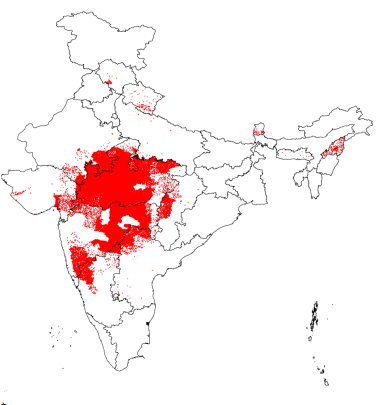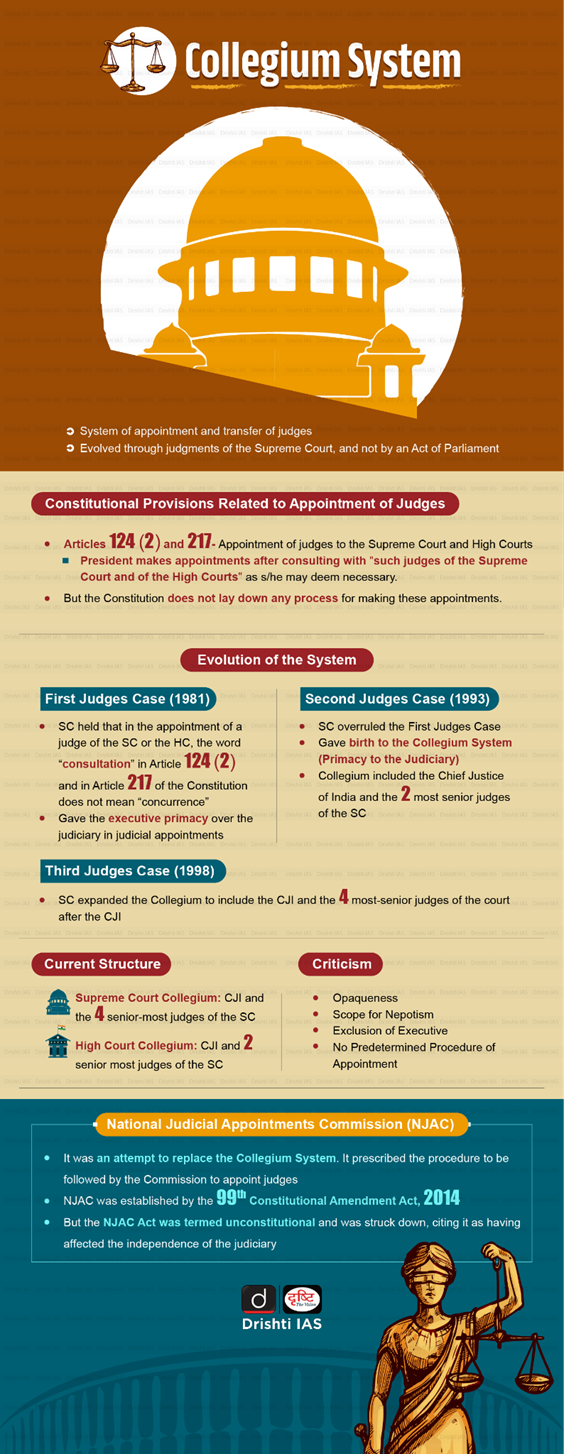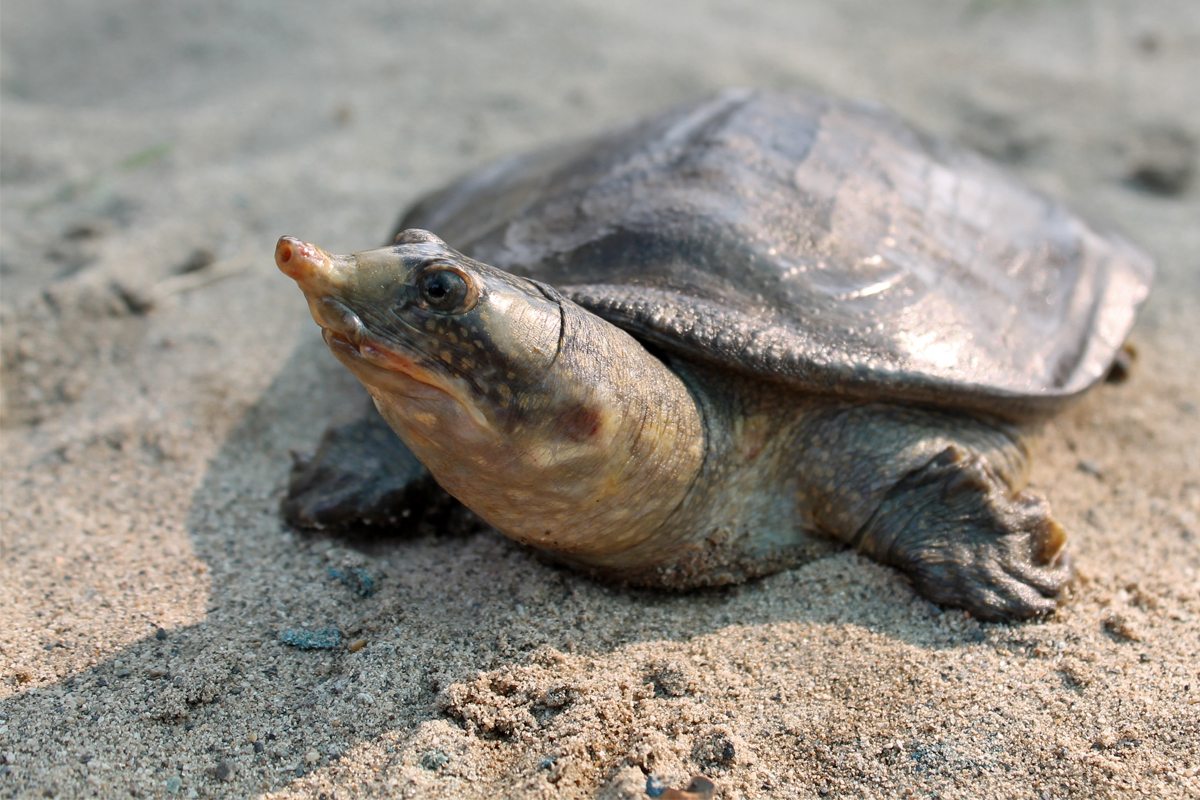Madhya Pradesh Switch to Hindi
MP Launches Key Development Projects
Why in News?
To commemorate the 300th birth anniversary of Lokmata Devi Ahilyabai Holkar, Madhya Pradesh announced key initiatives to boost infrastructure, empower women, and create youth jobs.
Key Points
- Key Cabinet Decisions:
- Devi Ahilyabai Holkar Training Program Scheme:
- Aims to link youth with employment through skill development.
- Provides interest subsidies up to Rs 10,000 per individual on skill-based loans.
- Annual government allocation will be Rs 100 crore.
- Madhya Pradesh Metropolitan Area Planning and Development Act, 2025:
- Enables creation of Metropolitan Planning Committees and Development Authorities for cities with population over 10 lakh.
- Focus areas will be urban planning, education, healthcare, and economic growth in cities like Indore, Bhopal, Ujjain, and Dewas.
- Acharya Shankar Museum under Ekatma Dham Project:
- Revised budget of Rs 2,195 crore sanctioned.
- The museum, located at Omkareshwar, will focus on Advaita Vedanta and aims to promote education and tourism.
- Working Women’s Hostels in Industrial Areas:
- Approval for constructing 26 hostels across 4 industrial zones with the Budget of Rs 249 crore.
- Facilities to include food courts, entertainment zones, and childcare areas, creating a safe and enabling space for women workers.
- Upgradation of MYR Hospital and Shyam Shah Medical College:
- Approval of Rs 1,095 crore to upgrade Maharaja Yashwant Rao Hospital (Indore) and Shyam Shah Medical College (Rewa).
- Includes construction of new hospital blocks, nursing hostels, and improved medical infrastructure.
- Rahveer Yojana:
- Incentivises bystanders who transport accident victims within the “golden hour”.
- Reward increased from Rs 5,000 to Rs 25,000 per lifesaving act.
- Extension of Mukhyamantri Urban Sanitation Mission:
- The scheme extended till 2028–29 with a budget of Rs 227 crore.
- Focus on enhancing urban sanitation through purchase of sludge removal vehicles, sewer cleaning tools, and protective gear for sanitation workers.
- Devi Ahilyabai Holkar Training Program Scheme:
Ahilyabai Holkar
- Birth & Background: Ahilyabai was born on 31st May 1725 in Chondi, Ahmednagar (Maharashtra), her father, Mankoji Rao Shinde, was the village head.
- Marriage & Early Life: She was married to Khanderao Holkar in 1733, the son of Malhar Rao Holkar, the ruler of Malwa and the founder of the Holkar dynasty.
- Ahilyabai was widowed in 1745 after Khanderao died in the siege of Kumher Fort.
- Malhar Rao Holkar prevented Ahilyabai from committing sati and trained her in military and administrative matters.
- Ascension to Power: After the death of Malhar Rao Holkar in 1766 and her son Male Rao Holkar in 1767, Ahilyabai Holkar took charge of Malwa and became the ruler of Indore in 1767.
- She appointed Tukoji Rao Holkar as army commander and made Maheshwar in Madhya Pradesh the Holkar dynasty’s capital.
- Social and Economic Contributions: Ahilyabai Holkar rebuilt the Somnath and Kashi Vishwanath temples, restoring key Jyotirlingas of Lord Shiva. She patronised scholars like Khushali Ram, Marathi poet Moropant, and Shahir Anantaphandi.
- She promoted women’s education, widow remarriage, and opposed practices like sati, while uplifting Bhil, Gond tribes, and lower castes.
- She made Maheshwar and Indore major trade hubs, promoting the Maheshwari weaving industry and making Maheshwari sarees renowned across India, now registered with a Geographical Indication (GI) tag.
Uttar Pradesh Switch to Hindi
High-Yielding Varieties of Soybean
Why in News?
Ahead of the Kharif 2025 season, the Department of Agriculture has recommended specific high-yielding soybean varieties for cultivation in the Bundelkhand region of Uttar Pradesh to optimize yields under local agro-climatic conditions.
Key Points
- Centrally Notified High-Yielding Varieties: These varieties have demonstrated excellent adaptability to the rainfall patterns, soil types, and temperature profiles typical of the Bundelkhand region.
- No additional state-specific soybean varieties have been notified exclusively for Uttar Pradesh.
- Suitability to Regional Conditions: They are expected to perform well in medium to deep black soils and under monsoon-dependent rainfall patterns.
- Soybean Cultivation in India: The cultivation is currently concentrated in a few key states, contributing around 4% to global soybean production.
- The major soybean-growing states include Madhya Pradesh, Uttar Pradesh, Maharashtra and Gujarat.
- Significance of Soybean Cultivation:
- Water Efficiency: Soybean requires considerably less water than paddy, making it a highly suitable crop for regions with limited water availability.
- Economic Viability: Due to its lower input costs and decent yield potential, soybean cultivation can offer farmers earnings that are comparable to, or even better than, those from paddy farming.
- Soil Health: As a legume, soybean enriches soil nitrogen, reducing the need for chemical fertilizers.
- Crop Diversification: Soybean can be effectively integrated into crop rotation systems such as soybean–wheat, soybean–peas–summer moong etc., helping farmers diversify their cropping patterns and reduce reliance on water-intensive paddy cultivation.
- Market and Nutrition Value: Soybean is rich in both protein and oil content, making it valuable for food, animal feed, and various industrial applications.
Kharif Crops
- Kharif crops are the crops that are sown during the rainy season, which in India typically lasts from June to September.
- These crops require a lot of water and hot weather to grow, and they depend heavily on monsoon rains.
- Sowing and Harvesting:
- Sowing Time: June to July (beginning of the monsoon)
- Harvesting Time: October to November (end of the monsoon)
- Common Kharif Crops:
- Paddy (rice), Maize (corn), Groundnut (peanut), Cotton, etc.
Rabi Crops
- Rabi crops are grown in the winter season, from October to March.
- These crops are typically sown after the monsoon ends and require cooler climates during the growth period and warm, dry conditions at the time of harvesting.
- Sowing and Harvesting:
- Sowing Time: October to November
- Harvesting Time: March to April
- Common Rabi Crops: Wheat, Gram (chana), Pea, Mustard, Linseed, etc.
Jharkhand Switch to Hindi
Collegium Recommends Jharkhand HC Chief Justice
Why in News?
The Supreme Court Collegium has recommended the elevation of Justice Tarlok Singh Chauhan, the senior-most judge of the Himachal Pradesh High Court, as the next Chief Justice of the Jharkhand High Court.
Key Points
- Constitutional Provisions Related to Appointment of Judges:
- Article 124(2): SC judges are appointed by the President after consultation with the Chief Justice of India (CJI) and other judges.
- Article 217: HC judges are appointed by the President after consultation with the CJI, the Governor of the concerned state, and the Chief Justice of the respective HC.
- Collegium System: The Collegium System refers to the method of appointment and transfer of judges in the SC and HCs.
- It is not explicitly mentioned in the Constitution but has evolved through various SC judgments.
- Composition:
- Supreme Court Collegium: Includes the CJI and the four senior-most SC judges.
- High Court Collegium: Led by the Chief Justice of the HC and its two senior-most judges.
- Evolution of the Collegium System: The system developed through four landmark Supreme Court cases, referred to as the Judges Cases:
- First Judges Case (1981) – S.P. Gupta v. Union of India
- The SC ruled that the term “consultation” does not mean “concurrence”.
- The ruling gave primacy to the executive in judicial appointments.
- Second Judges Case (1993) – Supreme Court Advocates-on-Record Association v. Union of India
- The Court overruled the First Judges Case and held that consultation means concurrence.
- Introduced the concept of a Collegium, requiring the CJI to consult two senior-most judges.
- Third Judges Case (1998)
- The SC expanded the collegium to five members—the CJI and four senior-most judges.
- National Judicial Appointments Commission (NJAC)
- The 99th Constitutional Amendment Act, 2014 introduced the NJAC to replace the collegium system.
- However, the SC struck it down, citing judicial independence concerns.
- The verdict reaffirmed the collegium system as the only mechanism for judicial appointments.
- First Judges Case (1981) – S.P. Gupta v. Union of India
Rajasthan Switch to Hindi
Keoladeo National Park
Why in News?
Keoladeo National Park in Rajasthan, famously called the 'paradise of birds', is now emerging as a vital sanctuary for turtles.
- It shelters eight of the ten turtle species found in the state, making it one of the region’s richest habitats for turtles.
Key Points
- Keoladeo National Park:
- About:
- It is a wetland and bird sanctuary located in Bharatpur, Rajasthan. It is a UNESCO World Heritage Site and one of the most important bird-watching areas in the world.
- Chilika Lake (Orissa) and Keoladeo National Park (Rajasthan) were recognized as the first Ramsar Sites of India in 1981.
- Currently, Keoladeo National Park and Loktak Lake (Manipur) are in the Montreux record.
- It is known for its rich avian diversity and abundance of waterbirds. The park is home to over 364 species of birds, including several rare and threatened species, such as the Siberian crane.
- It is a wetland and bird sanctuary located in Bharatpur, Rajasthan. It is a UNESCO World Heritage Site and one of the most important bird-watching areas in the world.
- Fauna: Animals such as jackals, Sambar, Nilgai, wild cats, hyenas, wild boar, porcupine and mongoose can be found in the region.
- Flora: The principal vegetation types are tropical dry deciduous forest dominated by Babul tree (Acacia nilotica) intermixed with dry grassland.
- River: Gambhir and Banganga are two rivers that flow through this National Park.
- About:
- Ideal Conditions for Turtle Habitats:
- The unique blend of water bodies, forest cover, and land within the park creates a near-perfect ecosystem for turtles.
- Deep ponds, marshy areas, and dense vegetation offer optimal conditions for turtle nesting, foraging, and reproduction.
- Turtle Species Found in Keoladeo National Park:
- The park is home to hundreds of turtles, with several believed to be over 200 years old.
- These ancient reptiles add to the park’s ecological and cultural richness.
- Among the diverse species, the Indian Softshell Turtle is especially significant.
- Thriving in ponds and rivers it plays a crucial role in maintaining aquatic health by feeding on aquatic animals and plants.
- This natural scavenging helps purify water bodies and maintain ecological balance.
- The Crowned River Turtle, a herbivorous species marked by yellow-orange stripes on its face, adds to the park’s biodiversity.
- Other rare species include:
- Indian Flapshell Turtle
- Indian Tent Turtle
- Indian Star Turtle
- The park is home to hundreds of turtles, with several believed to be over 200 years old.
Indian Softshell Turtle (Ganges Softshell Turtle)
- About:
- The Indian Softshell Turtle, also known as the Ganges Softshell Turtle, is a freshwater species native to rivers in northern and eastern India.
- It belongs to the Trionychidae family, known for turtles with flexible, leathery shells instead of hard scales.
- Natural Habitat:
- Distinctive Shell Characteristics:
- The turtle’s carapace (upper shell) is smooth, oval to round in shape.
- Its shell typically appears olive or green, often edged with a yellow border.
- Conservation Status:
- IUCN Red List: Endangered
- Wildlife Protection Act (WPA), 1972: Schedule I
- CITES: Appendix I
- Other Notable Softshell Turtles in India:
- Leith’s Softshell Turtle: Endemic to peninsular India and classified as Critically Endangered.
- Peacock Softshell Turtle: Listed as Endangered and found in ponds and temple tanks of northeastern India and Bangladesh.
Uttar Pradesh Switch to Hindi
Project Alankar
Why in News?
Project Alankar, an educational reform initiative by the Uttar Pradesh government, has been widely appreciated during a meeting chaired by the Prime Minister in New Delhi.
Key Points
Project Alankar
- About: It was launched on 1st October 2021, by the Government of Uttar Pradesh.
- It aims to achieve 100% compliance with 35 infrastructure and facility benchmarks in 2,441 government secondary schools.
- Its primary goal is to create a more conducive, inclusive, and modern learning environment for students across the state.
- Key Features of Project Alankar:
- Upgradation of physical infrastructure including newly constructed classrooms, science labs, libraries, computer labs, and smart classrooms.
- Provision of essential amenities such as clean drinking water and hygienic toilets, particularly focusing on girls' sanitation facilities.
- Development of specialized schools under the scheme:
- Chief Minister Model Schools (pre-primary to Class 12) and Chief Minister Abhyudaya Schools (pre-primary to Class 8) are also being developed.
- These schools have state-of-the-art facilities, including Science, Technology, Engineering and Mathematics (STEM) laboratories, computer labs, etc.
- Each Abhyudaya School, designed to accommodate 450 students, was allocated Rs 1.42 crore for development
- Chief Minister Model Schools (pre-primary to Class 12) and Chief Minister Abhyudaya Schools (pre-primary to Class 8) are also being developed.
- Renovation and modernization of 141 Sanskrit schools across 7 districts, with dedicated funding of Rs 14.94 crore for their rejuvenation.
- Funding and Implementation:
- Funding sources for Project Alankar include the state government, Samagra Shiksha Abhiyan, Gram Panchayats, urban local bodies, corporate Corporate Social Responsibility (CSR) contributions, and voluntary donations.
- Implementation is rigorously monitored by district-level committees headed by district magistrates and overseen by the state education director.
- Impact and Outcomes:
- According to the Annual Status of Education Report (ASER) 2024, government secondary school enrolment increased by 23% between 2022-23 and 2024-25.
- Primary school attendance (classes 1–5) rose by 11.5% from 2010 to 2024, while upper primary attendance (classes 6–8) grew by 9.6% between 2018 and 2024 — the highest in the country.
- Usage of school libraries surged by 55.2%, and access to girls’ toilet facilities improved by 54.4%, reflecting better sanitation and learning support.
Samagra Shiksha Abhiyan
- About: Introduced in the Union Budget 2018-19, Samagra Shiksha is a comprehensive program covering education from pre-nursery to Class 12 to ensure equitable learning outcomes.
- Key Features:
- Integration of Schemes: It subsumes three earlier schemes:
- Sarva Shiksha Abhiyan (SSA): Focused on universal primary education.
- Rashtriya Madhyamik Shiksha Abhiyan (RMSA): Aimed at secondary education.
- Teacher Education (TE): Focused on training teachers.
- Sector-Wide Development Approach: It streamlines implementation across all levels (state, district, and sub-district) instead of fragmented project-based objectives.
- Alignment with SDGs: Ensures free, equitable, and quality education (SDG 4.1) while eliminating gender disparities and ensuring access for vulnerable groups (SDG 4.5).
- Implementation: It is a Centrally Sponsored Scheme (CSS) implemented through a single State Implementation Society (SIS) at the State/UT level.
- SIS is a state-registered body implementing CSS and development programs.
Rajasthan Switch to Hindi
SC Approves Wetlands Near Ana Sagar Lake
Why in News?
The Supreme Court has approved the Rajasthan government’s comprehensive proposal to develop two new wetlands near Ajmer, aiming to restore ecological balance while ensuring sustainable urban development around Ana Sagar Lake.
Ana Sagar Lake
- Located in Ajmer, it is an artificial lake, built by Prithviraj Chauhan's father Arunoraj or Anaaji Chauhan in the middle of the twelfth century (1135-1150 AD).
- Due to being constructed by Aanaji, this lake was named Aana Sagar or Ana Sagar.
- It is one of Ajmer’s most popular lakes and one of India’s largest lakes.
- Later, the Mughal ruler Jahangir built Daulat Bagh, also known as Subhash Udyan, in the courtyard of the lake.
- Shah Jahan constructed a marble Baradari (pavilion) around it in 1637 AD, which further enhances the beauty of the lake.
Key Points
- Background:
- Ana Sagar Lake, an important urban water body in Ajmer, has faced ecological degradation due to unregulated development and human activities in its vicinity.
- The National Green Tribunal (NGT) had earlier directed the removal of several unauthorized structures in the lake’s green zones, including a Seven Wonders replica to protect the lake’s ecosystem.
- Locations of the Proposed Wetlands:
- Two wetlands will be constructed outside Ana Sagar’s catchment area: a 12-hectare wetland at Foy Sagar (Varun Sagar) Extension near Hathi-Khera, and a 10-hectare wetland at Tabiji-1.
- These wetlands aim to improve water retention, biodiversity, and ecological health in the region.
- Scientific Review and Environmental Assessment:
- The National Environmental Engineering Research Institute (NEERI), appointed by the Ajmer Municipal Corporation, conducted a comprehensive environmental assessment.
- NEERI is a premier research institute under the Council of Scientific and Industrial Research (CSIR), functioning under the Ministry of Science and Technology.
- It plays a vital role in environmental management, pollution control, and sustainable development through R&D, policy development, and technology innovation.
- The National Environmental Engineering Research Institute (NEERI), appointed by the Ajmer Municipal Corporation, conducted a comprehensive environmental assessment.
Wetlands
- Wetlands are defined as areas of marsh, fen, peatland, or water (natural or artificial) with water that is static or flowing, including marine areas with a depth not exceeding six meters.
- Wetlands are ecotone, having land transitional between terrestrial and aquatic ecosystems.
- Significance of Wetlands:
- Natural Water Filters: Wetlands act as natural water filters by trapping sediments, breaking down pollutants, and absorbing excess nutrients.
- Flood Prevention: Wetlands absorb and store excess water, reducing flood risks by up to 60% and safeguarding homes and infrastructure, according to the National Disaster Management Authority (NDMA).
- Habitat for Wildlife: Wetlands, though covering just 6% of the Earth’s surface, support over 40% of global species—including threatened ones like the Sarus Crane—making them vital wildlife habitats, as per Space Applications Centre (SAC).
- Carbon Sequestration: Wetlands store significant carbon in their soil and vegetation, and the Indian Network for Climate Change Assessment (INCCA) highlights their restoration as key to advancing India’s climate goals through carbon sequestration, cleaner water, and reduced flood risks.
- Some of the Wetlands Located in Rajasthan:
|
Protected Area |
Wetland |
|
|
|
|
|
|
|
Shergarh Wildlife Sanctuary |
|
West Bengal Switch to Hindi
Banglar Bari Rural Housing Scheme
Why in News?
The Chief Minister of West Bengal has announced that 12 lakh beneficiaries have received the second installment under the Banglar Bari rural housing scheme.
- The remaining 16 lakh beneficiaries under Phase 1 will receive funds in December 2025, while Phase 2 of the scheme is set to commence in May 2026.
Key Points
- About Banglar Bari Housing Scheme:
- The scheme, launched on 25th June, 2015, aims to provide housing to the rural poor, especially after the Centre halted funds under the PM Awaas Yojana.
- To avail of the benefits under the scheme, the beneficiaries must belong to the Economically Weaker Sections (EWS) category.
- The housing mission is being executed through four distinct verticals, offering beneficiaries flexibility in choosing the most suitable option:
- In-situ Slum rehabilitation of Slum Dwellers with the participation of private developers using land as a resource (ISSR)
- Promotion of Affordable Housing for weaker sections through credit linked subsidy (CLSS)
- Affordable Housing in Partnership with Public & Private sectors (AHP)
- Subsidy for beneficiary-led individual house construction (BLC)
- Chaa Sundari Extension Scheme:
- Workers are receiving free ration, water, electricity, and healthcare, land rights (pattas), and financial aid under the Chaa Sundari Extension Scheme.
- The scheme was launched in 2020 by the government of West Bengal.
- It aims to provide pucca dwelling houses to the permanent tea garden workers of closed/sick tea gardens who do not have pucca houses of their own by way of allotment through the construction of dwelling units on lands in the tea gardens.
- The scheme currently benefits over 8,000 families in Jalpaiguri and 13,000 families in Alipurduar.
- Workers are receiving free ration, water, electricity, and healthcare, land rights (pattas), and financial aid under the Chaa Sundari Extension Scheme.
Pradhan Mantri Awaas Yojana (PMAY)
- Launch: To achieve the objective of “Housing for All” by 2022, the erstwhile rural housing scheme Indira Awaas Yojana (IAY) was restructured to Pradhan Mantri Awaas Yojana-Gramin (PMAY-G) from 1st April 2016, as a centrally sponsored scheme.
- The Union Cabinet approved the proposal for implementation of the PMAY-G during FY 2024-25 to 2028-29.
- Aim: To provide a pucca house with basic amenities to all rural families, who are homeless or living in kutcha or dilapidated houses by the end of March 2022.
- To help rural people Below the Poverty Line (BPL) in the construction of dwelling units and upgradation of existing unserviceable kutcha houses by assisting in the form of a full grant.
- Nodal Ministry: Ministry of Rural Development.
- Status: States/UTs have sanctioned 2.85 crore houses to the beneficiaries and 2.22 crore houses have been completed till March 2023.


.png)





.jpg)









.png)


.jpg)



 PCS Parikshan
PCS Parikshan





